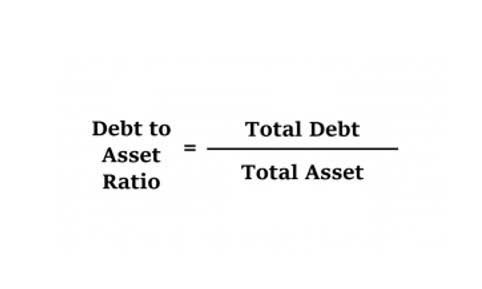How to calculate average collection period: A guide for AR managers
A longer period could hurt your business, while a shorter one keeps things running smoothly. Read on to learn what the average collection period is, how to calculate it, and how it can help you manage your finances more effectively. A longer average collection period can lead to cash flow problems, as it takes longer for a company to collect its accounts receivable and convert them into cash. This can impact a company’s liquidity and ability to meet its short-term obligations. Key performance metrics such as accounts receivable turnover ratio can measure your business’s ability to collect payments in a timely manner, and is a reflection of how effective your credit terms are.
Additionally, changes in economic conditions or industry dynamics can impact customer payment behaviour, leading to extended collection periods. Industries such as banking (specifically, lending) and real estate construction usually aim for a shorter average collection period as their cash flow relies heavily on accounts receivables. On the other end of the spectrum, businesses that offer scientific R&D services can have an average collection period of around 70 days.
Ideally, a shorter collection period is generally preferred, as it indicates that the company collects receivables quickly and has efficient credit and collections practices. This typically suggests a well-managed cash flow and a more financially stable operation, as funds are being reinvested into the business sooner. The Average Collection Period is a financial metric that measures how long, on average, it takes a company to collect payments from customers. This period is important for understanding the company’s cash flow cycle and evaluating its ability to manage accounts receivable effectively. To calculate the average collection period, divide the average balance of accounts receivable by the total net credit sales for the period.
Receivables collection period increase
Interpreting the average collection period involves comparing it to industry benchmarks and competitors. A lower average collection period indicates that a company is efficient in collecting its receivables, which is generally positive. Conversely, a higher average collection period suggests inefficiencies in credit management and potential liquidity issues. It’s important to consider the industry context, as some industries naturally have longer collection periods due to their business models. In conclusion, the average collection period is an important indicator for companies to track.
Learn how to calculate the average collection period, understand its significance, and explore factors that influence this key financial metric. Prashant Kumar is the Vice President of Alevate AR at Serrala, leading the charge in AI-powered finance automation for the Office of the CFO. With over 20 years of experience in enterprise software, he has a proven track record of scaling businesses and delivering value through product innovation and strategic growth. Prashant is committed to transforming the Order-to-Cash (O2C) process, optimizing cash flow, and driving digital transformation to help organizations streamline accounts receivable and maximize efficiency. Let’s say that Company ABC recorded a yearly accounts receivable balance of $25,000.
- You should always be monitoring your cash solvency so that you are sure you have enough capital available to take care of your financial responsibilities.
- Manual spreadsheets, disconnected systems, and collections feel more like chasing shadows than managing receivables.
- That’s why understanding how to calculate cash collections and, more importantly, how to enhance and automate them, is no longer just a nice-to-have skill.
- Our platform automates reminders as well as internal or external escalations, and other collections actions, streamlining your collections process.
- Monitoring collections is essential to maintaining a positive trend line in cash flows so as to easily meet future expenses and debt obligations.
How is the Average Collection Period Formula Derived?
It provides insights into the efficiency of a company’s credit and collection processes. The average collection period is the time it takes for a business to collect payments from its customers after a sale has been made. Businesses aim for a lower average collection period to ensure they have enough cash to cover their expenses. By monitoring your company’s average collection period, you can assess whether your credit policies and payment terms align with your business goals. It also provides insights into how well your accounts receivable department manages outstanding invoices and ensures timely payments from customers.
How to Calculate the Average Collection Period
The average collection period is the length of time it takes for a company to receive payment from its customers for accounts receivable (AR). This metric is critical for companies that rely on receivables to maintain their cash flow and meet financial obligations. By measuring the typical collection period, businesses can evaluate how effectively they manage their AR and ensure they have enough cash on hand. The average collection period is a crucial metric for evaluating your business’s financial health and operational efficiency. By measuring how long it takes to collect payments from customers, this metric provides insights into your cash flow, short-term liquidity, and the effectiveness of your collections process. Understanding the average collection period is crucial for businesses as it measures how efficiently they manage their accounts receivable.
Balance Sheet
It enables more accurate cash flow forecasting and alignment of business strategies with financial realities, helping companies navigate economic uncertainties while safeguarding their financial health. By leveraging automation, businesses can improve their ACP, enhance cash flow, and reduce financial risk. This means the company takes an average of 36.5 days to collect payments from customers. The secret to accounts receivable management is knowing how to track and measure performance. It’s not enough to look at a final balance sheet and guess which areas need improvement.
A shorter ACP is generally considered to be more favorable for a company, as it means that cash is flowing into the business more quickly. The average collection period is a versatile tool that businesses use to forecast cash flow, evaluate loan conditions, track competitor performance, and detect early signs of poor debt allowances. ar collection period formula By regularly measuring and evaluating this indicator, companies can identify trends within their own business and benchmark themselves against their competitors. The receivables collection period ratio interpretation requires a comprehensive understanding of the company’s industry, business model, and credit policies. Using those assumptions, we can now calculate the average collection period by dividing A/R by the net credit sales in the corresponding period and multiplying by 365 days. Also, keep in mind that the average collection period only tells part of the story.
Reduce the accounts receivables workload for your team with a credit control specialist
- By benchmarking against the industry standard, a company can gauge easily whether the number is acceptable or if there is potential for improvement.
- Your goal is for clients to spend less time in accounts receivable and more time paying bills promptly.
- The average collection period plays a crucial role in maintaining a company’s financial health.
- In a world where even a 30- to 60-day delay can lead to budget freezes or missed payroll, the time to modernize your collections process isn’t next quarter, but now.
It reveals how effectively your credit management policies are functioning and how efficiently your collections process operates. When tracked consistently, it helps identify which customer segments or sales regions are causing delays. A company’s average collection period gives an insight into its AR health, credit terms, and cash flow. Without tracking the ACP, it will become difficult for businesses to plan for future expenses and projects.
The average collection times serve as a good comparison because similar organizations would have comparable financial indicators. Businesses can assess their average collection period concerning the credit terms provided to clients. If the invoices are issued with a net 30 due date, a collection period of 25 days might not be a cause for concern. Since it directly affects the company’s cash flows, it is imperative to monitor the outstanding collection period.
A short and precise turnaround time is required to generate ROI from such services (you can find more about this metric in the ROI calculator). Thus, by neglecting their policies for managing accounts receivable, they can potentially have a severe financial deficit. Once you have calculated your average collection period, you can compare it with the time frame given in your credit terms to understand your business needs better. 💡 To calculate the average value of receivables, sum the opening and closing balance of your required duration and divide it by 2.
Typically, the average accounts receivable collection period is calculated in days to collect. This figure is best calculated by dividing a yearly A/R balance by the net profits for the same period of time. You need to calculate the average accounts receivable and find out the accounts receivables turnover ratio. Alternatively and more commonly, the average collection period is denoted as the number of days of a period divided by the receivables turnover ratio. The average accounts receivable balance is the midpoint of your accounts receivable over a given period.
You must monitor and evaluate important A/R key performance indicators (KPIs) in order to improve performance and efficiency. It means that Company ABC’s average collection period for the year is about 46 days. It is slightly high when you consider that most companies try to collect payments within 30 days. A fast collection period may not always be beneficial as it simply could mean that the company has strict payment rules in place.




















